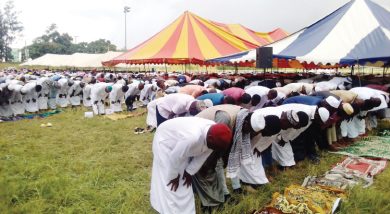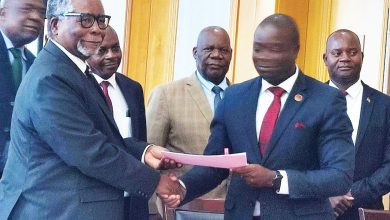Sad tale of Dzalanyama Forest

On July 26, Minister of Environment and Climate Change Management Halima Daudi could not hide her disappointment upon seeing the state in which Dzalanyama Forest Reserve is.
Dzalanyama, which loosely means “full of animals”, is fast losing its richness. People in surrounding communities are felling trees for timber, firewood and charcoal.
It was towards sunset when Daudi got out of her official vehicle and stepped on the forest reserve.
“So, I am standing on the border between Malawi and Mozambique?” she asks.
The surprise was evident on her face as she stood on what was once a thick forest.
The 20 000-hectare forest covers three districts: Mchinji, Lilongwe and Dedza. Out of the area, 2 169 hectares belong to a plantation of exotic pine trees.
“Right now, trees are remaining in about 40 hectares of the 2 169,” says plantation manager, Joe M’bang’ombe. Since 2009, the officer and his staff managed to replant 250 hectares. In 2012/13 they have replanted 62.1 hectares.
“Sadly, 30 hectares were burnt in July. The cause of the fire is unknown,” M’bang’ombe says.
He wishes he had at least 300 workers to help manage the forest and not 82 as he has now.

The reserve is fast losing trees to illegal and legal felling as well as bush fires.
Alex Zumani got a licence from the Regional Forestry Office to cut trees for timber. He uses a government-banned Amec machine to cut the trees and he does not hide it.
Like his fellow loggers, Zumani does not replant the areas they cut the trees and M’bang’ombe is aware.
“I don’t know if the loggers are supposed to plant trees whenever they cut them for the timber and log business,” says M’bang’ombe.
And Zumani admits that the loggers simply cut the trees without replacing them.
“If the forest manager had told us that we were supposed to replant in the areas we cut down the trees, we would have been doing it but we thought it was the responsibility of the Forestry Department,” he says.
Daudi is not happy with the explanation. She straight away orders the manager and the loggers to start replanting the trees and that when issuing the next round of licences, this has to be one of the conditions in the licence.
When Daudi asks M’bang’ombe why he does not ask the loggers to replant the trees, he answers, “It is a trend coming from the past.”
Unsatisfied, Daudi responds: “We should behave as Malawians, we should love our country. Break that trend and tell them to replace the trees.”
Having toured the forest the whole day, Daudi comes to this spot where she stands on a Malawi-Mozambique border and the sun is about to set.
The surrounding has a striking difference; the Malawi side of the forest is marked with lots of felled trees and mounds depicting charcoal was being burnt not long ago.
Daudi learns a disturbing revelation as to why the forest is intact on the Mozambican side, but in bad shape just a few yards away. According to the plantation manager, people from Mozambique come to burn charcoal on the Malawian side of the forest.
“Sometimes, they cut our trees and drag them into the Mozambican soils for charcoal or firewood,” he says, adding the Mozambicans take advantage of the locals’ careless tree cutting.
While all this is happening, it is important to remember that three of Malawi’s notable rivers, Bua, Diamphwe and Lilongwe, have their source in the same forest.
Lilongwe, which relies on Lilongwe River for its water supply, runs a risk of having water problems in future if Dzalanyama Forest Reserve is not saved from degradation.





